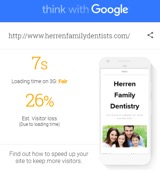Compelling Content Can Help Your Dental Practice Connect with Customers
 A well-crafted content strategy is more important than ever for dental practices looking to enhance customer engagement and build lasting relationships. For small business owners and dentists, ProspectaMarketing can help you leverage compelling content and be a powerful tool in your dental marketing arsenal.
A well-crafted content strategy is more important than ever for dental practices looking to enhance customer engagement and build lasting relationships. For small business owners and dentists, ProspectaMarketing can help you leverage compelling content and be a powerful tool in your dental marketing arsenal.
The Power of Storytelling
Content that tells a story can transform your practice from just another dental office into a brand that resonates with patients. Sharing patient success stories or showcasing your team’s expertise humanizes your practice and helps build trust. When patients see real-life examples of how you’ve improved smiles, they are more likely to connect with your brand on a personal level.
Boosting Customer Engagement
Compelling content engages customers by addressing their concerns and interests. Whether it’s an informative blog post about the latest dental technology or a quick tip on oral hygiene, content that educates and informs helps establish your practice as an authority in the dental field. This not only increases customer engagement but also enhances your credibility.
Personalization Matters
Every patient is unique, and your content should reflect that. Personalizing content based on patient demographics, needs, and preferences can significantly improve customer engagement. For instance, providing targeted advice for different age groups or showcasing treatments for specific dental issues can make your content more relevant and valuable to your audience.
The Role of Social Media
Social media platforms are effective channels for amplifying your content and connecting with your audience. Regularly sharing engaging posts, videos, or infographics can boost your practice’s visibility and encourage interaction. Responding to comments and messages further enhances customer engagement and shows that you value their feedback and questions.
Partnering with Experts
Developing a content strategy may seem daunting, but partnering with experts like ProspectaMarketing can simplify the process. With experience in dental marketing, they can help craft a content plan that aligns with your goals and resonates with your target audience.
Compelling content is more than just words on a page; it’s a bridge that connects your practice with your patients, fosters trust, and drives engagement. By investing in a thoughtful content strategy, you can elevate your dental practice’s brand and strengthen your relationship with current and potential patients.
ProspectaMarketing is an experienced Internet marketing firm specializing in dental practices and the tools of Internet marketing. We help you reach key prospects who are looking for what your practice has to offer. Our unique and thorough approach provides visibility, financial accountability, and ongoing refinement and improvement. You can find out more by contacting Lane Anderson toll-free at 1-877-322-4440 Ext 101, by email using the form on our Contact Us page, or online at ProspectaMarketing.com.



